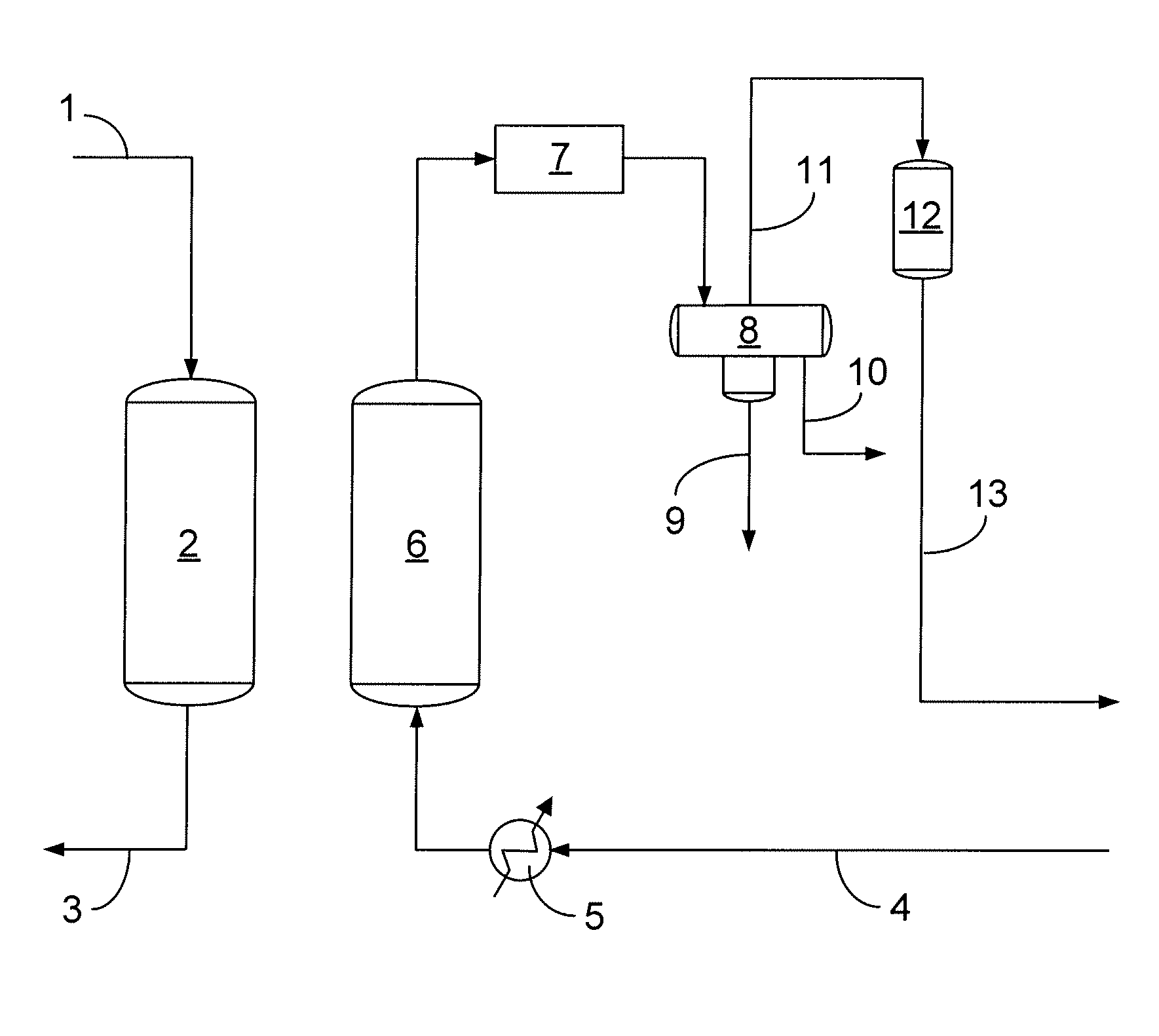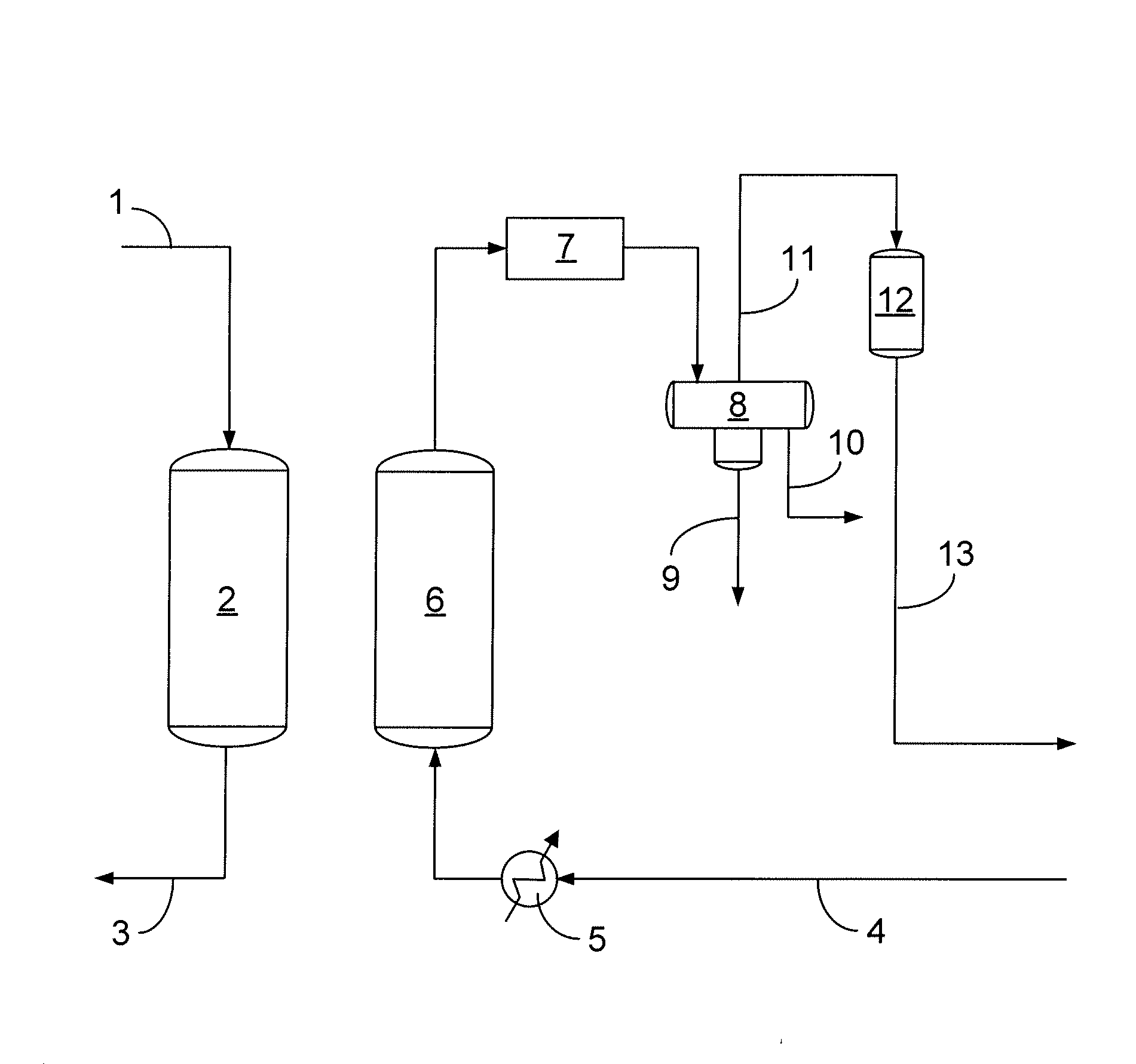Process for Removal of Mercury from Gas Stream
a gas stream and mercury technology, applied in the direction of separation processes, dispersed particle separation, chemistry apparatus and processes, etc., can solve the problems of toxic mercury pollution, inability to use mercury extraction by these metals industrially on a large scale, and inability to achieve high-efficiency scavenger, high bet surface area, and high availability of insoluble mercury
- Summary
- Abstract
- Description
- Claims
- Application Information
AI Technical Summary
Benefits of technology
Problems solved by technology
Method used
Image
Examples
example
[0031]A four feet rotating pan device was used to continuously form beads by simultaneously adding transition alumina and basic copper carbonate (BCC) powders while spraying the powders with water. The pH of the water was adjusted to pH 13.5 by adding a NaOH solution. The transition alumina (TA) powder was produced by UOP LLC in Baton Rouge, La. The basic copper carbonate was obtained as “dense” powder from Phibro-Tech (Ridgefield Park, N.J.). The mass ratio of BCC: TA was 45:55, which corresponds to a mole ratio “a / b” of about 0.38. The water feeding rate was adjusted to provide for sufficient agglomeration and maximize the content of 8×14 mesh size fraction. The water feeding rate was approximately equal to the feeding rate of the BCC powder. The “green” agglomerates were collected after discharging from the rotating pan and subjected to “drum” curing at ambient temperature.
[0032]The product from the Example is then used to remove sulfur compounds, such as H2S, from a hydrocarbon ...
PUM
| Property | Measurement | Unit |
|---|---|---|
| temperature | aaaaa | aaaaa |
| pressure | aaaaa | aaaaa |
| temperature | aaaaa | aaaaa |
Abstract
Description
Claims
Application Information
 Login to View More
Login to View More - R&D
- Intellectual Property
- Life Sciences
- Materials
- Tech Scout
- Unparalleled Data Quality
- Higher Quality Content
- 60% Fewer Hallucinations
Browse by: Latest US Patents, China's latest patents, Technical Efficacy Thesaurus, Application Domain, Technology Topic, Popular Technical Reports.
© 2025 PatSnap. All rights reserved.Legal|Privacy policy|Modern Slavery Act Transparency Statement|Sitemap|About US| Contact US: help@patsnap.com


